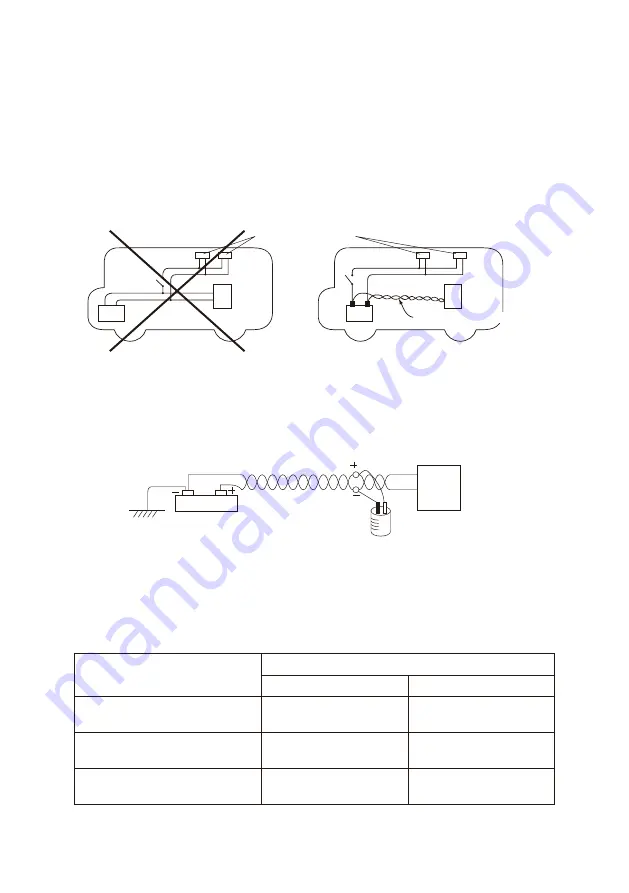
- 13 -
3) To prevent radio noise and avoid absorbing high surge
frequency, insert a capacitor of 10000μ-F as shown in (Fig. 3)
below.
4) Selecting the correct gauge for wiring is important to avoid
voltage drop. Follow the chart below when wiring the
refrigerator to the battery.
1) Twisting lead wire
To further reduce the radio interference during DC operation,
twist the negative and positive cables (use separate cables)
together into a spiral form, between the battery.
2) Connecting refrigerator directly to battery
Any switches and lead wires for other electrical equipment
should not be shared with the wiring between the refrigerator
and the battery. Other equipment can generate high voltage
pulses which may cause transistor damage to the refrigerator
power supply. (See Fig. 2)
Distance between
product and battery
From 6m (19ft.)
to 10m (32ft.)
More than 10m (32ft.)
(Not recommended,too long)
Less than 6m (19ft.)
DC 12 VOLT USE
SWG#16 (AWG#14)
/ 2.1mm
2
or more
DC 24 VOLT USE
Wire Gauge
SWG#18 (AWG#16)
/ 1.25mm
2
or more
SWG#14 (AWG#12)
/ 3.3mm
2
or more
SWG#16 (AWG#14)
/ 2.1mm
2
or more
SWG#12 (AWG#10)
/ 5.3mm
2
or more
SWG#14 (AWG#12)
/ 3.3mm
2
or more
ELECTRIC EQUIPMENT
TWISTING OF LEAD WIRE
FRIDGE
BATT
GOOD
FRIDGE
BATT
WRONG
(Fig.2)
(Fig.3)
BATT
FRIDGE
Capacitor
(Condenser)














































